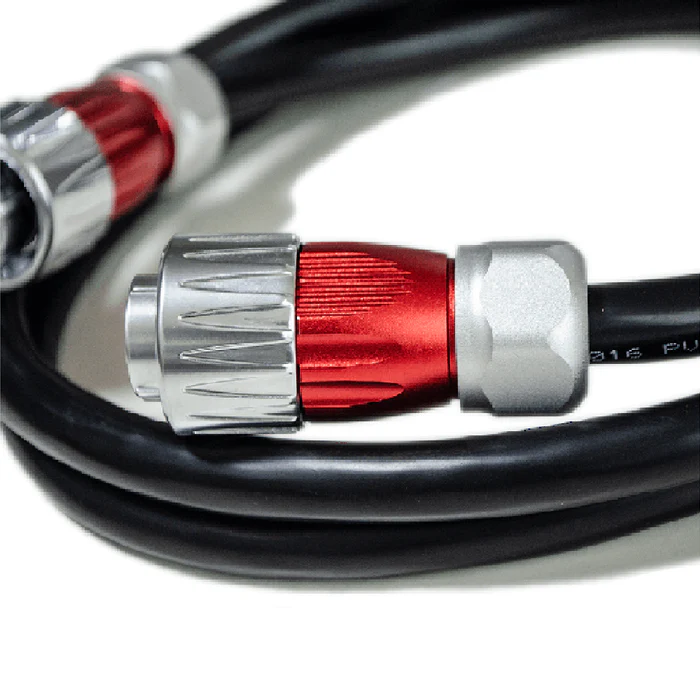
Orders & Worldwide
Orders & Worldwide

In the realm of industrial automation, robots have become a crucial part of enhancing precision, efficiency, and productivity across many industries. These robots execute various tasks with the utmost speed, accuracy, and consistency, be it automotive manufacturing or electronics assembly. Behind their seamless movements and operations of industrial robots lies a wide network of cables which is an indispensable part of powering, controlling, and communicating these machines.
A significant component is the controller-to-teach-pendant. This is a handheld device which allows users to interact easily with the robot. It enables real time communication between the robot’s central controller and the teach pendant that allows the users to instruct the robot on specific tasks which include troubleshooting and maintenance.
There are diverse types of cables used in industrial robotics, from power supply to high-flex cables which drive innovation and progress in automation technology.
Industrial robots at their core are powerful motors and actuators that control the precise movements, essential for executing tasks such as painting, welding, and material handling. These power supply cables act as the heart of these motors, transporting electrical energy from the power source to control the robot’s mechanical components.
1. Power supply cables
These power supply cables are engineered to transport current and high voltage to the motors, actuators, and other components of the robot that require power. It is essential for these cables to handle the considerable amount of power demanded by the industrial robots while ensuring efficient power transmission with minimal losses.
2. Motor cables
Motor cables connect the robot’s motors to the motor drives or controllers, transporting electrical signals that control the speed, direction, and torque of the motors. These motor cables play an essential role in translating commands from the robot’s controller into precise movements of its joints and end effectors, thus, enabling smooth and accurate operation.

In addition to power transmission, industrial robots rely on feedback systems to monitor their position, velocity, and other parameters in real-time. Feedback cables play a vital role in transmitting signals from encoders, sensors, and other feedback devices back to the robot's controller, enabling closed-loop control and precise positioning.
1. Feedback cables
Feedback cables transmit feedback signals from sensors and encoders mounted on the robot's joints and actuators back to the controller. These signals provide essential information about the robot's position, velocity, and acceleration, allowing the controller to make real-time adjustments to optimize performance and accuracy.
Effective communication between different components of the robot is essential for coordinated operation and seamless integration with peripheral devices such as grippers, tool changers, and vision systems. Communication cables enable data exchange between the robot's controller, sensors, actuators, and external devices, enabling efficient control and monitoring of robotic systems.
1. Communication cablesCommunication cables facilitate data exchange between the robot's controller, sensors, actuators, and peripheral devices. These cables transmit various types of data, including commands, feedback, status updates, and diagnostic information, enabling coordinated operation and monitoring of the robot system.
2. Power supply cablesSignal and control cables carry low-voltage control signals for various functions of the robot, such as start/stop signals, emergency stop signals, safety interlocks, and status indicators. They also transmit control signals for peripheral devices, enabling seamless integration and coordination of robot functions.
In robotics, signal mainly focuses on the communication of information such as sensor data, system status or the general communication between devices. On the other hand, control involves managing and directing the robots actions which includes translating signals and commands into specific movements or tasks.
Industrial robots operate in harsh and demanding environments, where factors such as heat, moisture, vibration, and mechanical stress can pose challenges to cable reliability and performance. Proper cable management and protection are essential to ensure the longevity and efficiency of robotic systems.
1. Cable management for robots
Robot dressing cables are used to organize and protect the cables that connect the robot's moving parts to its stationary components, such as the controller and power source. These cables help prevent cable damage, tangling, and interference during the robot's movements, ensuring smooth and reliable operation.
2. High-flex cablesIn applications where the robot undergoes frequent or continuous movements, such as in high-speed or high-precision operations, high-flex cables are used to withstand repeated bending, twisting, and stretching without degradation or failure. These cables are designed with special materials and construction to ensure durability and reliability in demanding environments.
Robots use various different cables to perform a wide variety of functions that include power transmission, control, data communication and sensor integration. The various types of wires used are based to meet the particular requirements such as flexibility and durability.
A robotic cable is a specialized type of cable engineered to meet the unique demands of robotics and industrial automation. These cables are designed to endure the stresses and movements associated with robotic applications, where flexibility, durability, and reliability are critical.
A cable robot, also known as a cable-driven parallel robot or a cable-suspended robot, is a type of robot where the end-effector or platform is controlled by a system of cables and winches. Unlike traditional rigid-link robots, cable robots use tensioned cables to manipulate and position a payload within a defined workspace.
All in all, cables are the unsung heroes of industrial robotics, providing the essential connections that power, control, and communicate with robotic systems. From powering precision movements to facilitating communication and protecting cable systems, cables play a critical role in driving innovation and progress in automation technology. As industrial robots continue to evolve and advance, the importance of cables in enabling efficient, reliable, and high-performance robotic systems cannot be overstated. By understanding the functions and significance of cables in industrial robotics, manufacturers and engineers can optimize their designs, enhance their capabilities, and unlock new possibilities for automation in diverse industries.
{"one"=>"Select 2 or 3 items to compare", "other"=>"{{ count }} of 3 items selected"}
Leave a comment on this topi